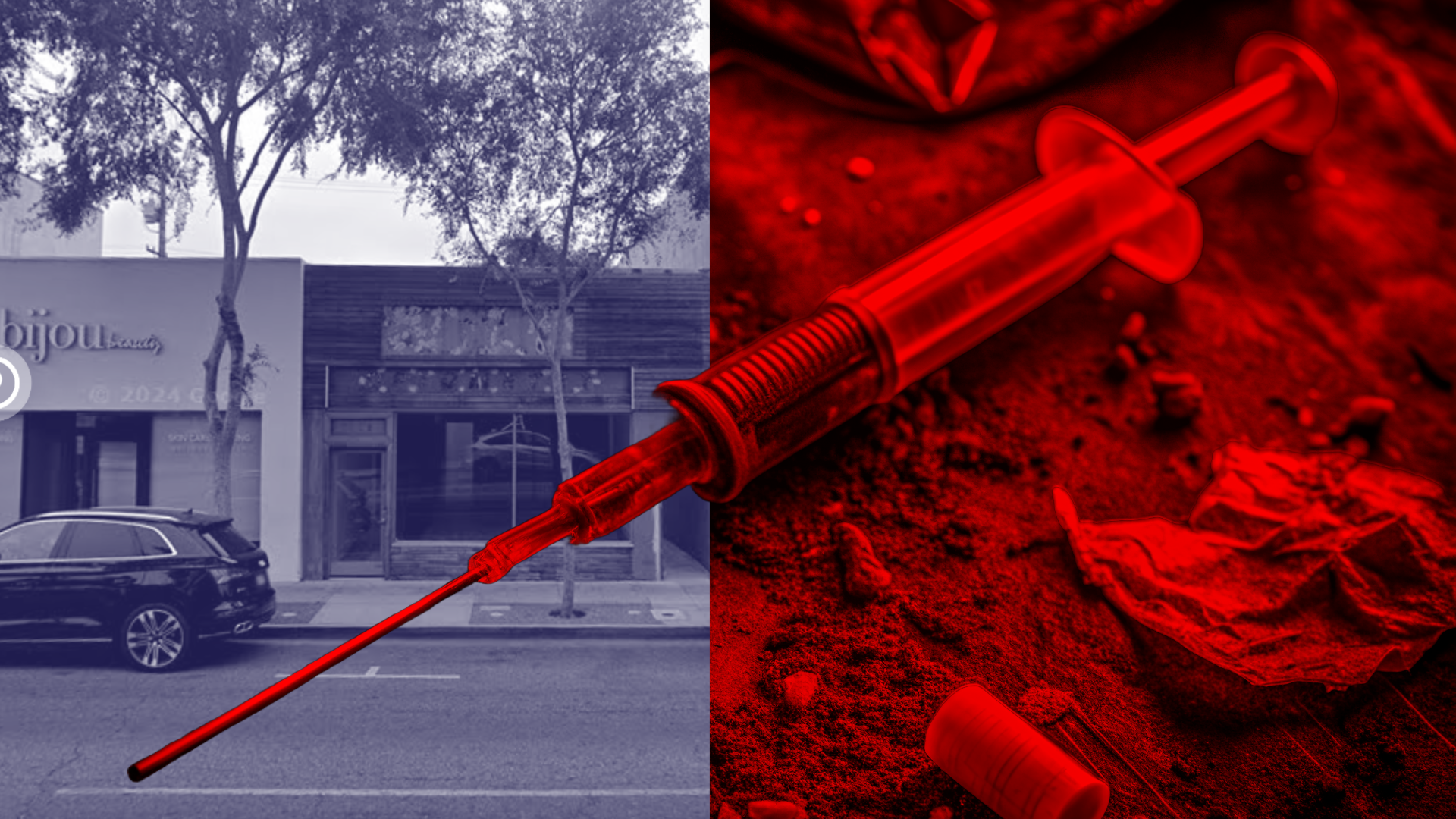
West Hollywood is adopting a controversial strategy to combat rampant drug addiction on the city’s streets and the associated homelessness crisis.
The principle of “harm reduction” is the foundation of several of the city’s key social service initiatives, including the new needle exchange center, the planned Holloway Interim Housing Program, and city contractors such as WeHo Life, which provides condoms, lubricants, fentanyl test strips and drink-spice test strips, as well as educational materials and engagement services.
Harm reduction is a public health approach that aims to reduce the negative effects of drug use, such as overdoses and the spread of diseases such as HIV and hepatitis C. It does this through measures such as providing clean needles, safe spaces for drug use, and naloxone, a medication that can reverse overdoses. The goal is to make drug use safer for those who continue to use drugs without requiring them to quit.
This approach gained traction in the 1980s and 1990s, helping to reduce the spread of HIV among drug users in New York and San Francisco. Despite its successes, the movement has been fraught with controversy. Critics claim these programs inadvertently encourage drug use by making it safer, and they express concern that harm reduction could harm efforts to achieve abstinence-based treatment and recovery. The most opposition has come from communities, who argue that harm reduction services such as needle exchanges and supervised consumption sites contributed to an increase in drug-related activity in their neighborhoods. Legal challenges have also arisen, particularly related to supervised consumption sites. Opponents argue that these facilities violate federal drug laws.
The West Hollywood Harm Reduction Center, operated by Being Alive every Tuesday through Saturday from 1 p.m. to 5 p.m., officially opened its doors to the public on July 9 at 7976 Santa Monica Blvd. (next to Candlerium) and offers needle exchange, overdose prevention, health education, art therapy and wraparound support services. Being Alive has subleased part of the center to Healthcare in Action to improve coordination in the care of drug users and individuals living with or at risk for HIV.
The center’s syringe service program is specifically geared toward supporting people who use drugs, but people who receive injectable medications such as insulin, hormones or steroids can also exchange and safely dispose of syringes. The program provides a safe place for participants to receive free sterile syringes, safely dispose of them, receive overdose care and get information. Other resources include HIV testing, referrals to treatment, and access to condoms and PrEP. The program also provides referrals to free or low-cost mental health services and treatment for substance use disorders, including rehabilitation.
“We know that people are going to use drugs no matter what,” said Timothy Zinbeck of Being Alive. “That’s why we step in and say, ‘If you’re going to use drugs, you need to take the following steps to minimize or reduce the harm that you may experience.'”
The center’s harm reduction philosophy, Zinbeck said, recognizes that drug use will continue despite legal and societal efforts to stop it. He emphasized the cost-effectiveness and public health benefits of needle exchange programs, pointing out that while the cost of running such a program is minimal, the potential savings in health care costs are significant.
“If a person is not well insured, they can cost taxpayers $120,000 to $160,000 a year,” he said. “We can run a needle exchange for $20 to $30 per person per year.”
The Holloway facility has raised concerns in the neighborhood with its commitment to harm reduction. Drug use is prohibited at the halfway house, but residents are not kicked out of the program if they are caught using or possessing drugs on the premises.
Zinbeck said public response to his program’s harm reduction strategies has been overwhelmingly positive, with many community members expressing gratitude for the service.
“Even some of the people who wonder if we are promoting drug use understand our intentions after we talk to them,” he said.
The Harm Reduction Center is also a safe disposal point for anyone with used needles – whether they come from drugs, insulin or other medications.
“Anyone who uses needles, whether it’s for insulin, steroids, hormones or even pet medications, can bring their used needles to us and we will dispose of them properly,” Zinbeck said.
